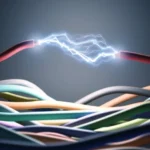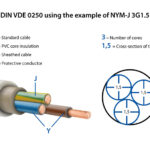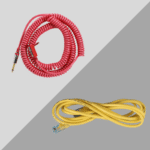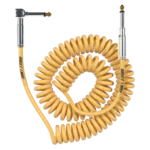 What Is a Lightning Cable?
What Is a Lightning Cable?
A Lightning cable is a type of USB cable designed and developed by Apple. It is used to connect Apple devices, such as iPhones, iPads, and iPods, to various peripherals like chargers, computers, and external devices. The Lightning cable supports charging, data transfer, and audio output, making it a versatile accessory for all modern Apple devices.
Introduced by Apple in 2012, the Lightning cable replaced the older 30-pin dock connector used in previous generations of Apple products. It features a small, reversible connector, making it easier to use and more durable than its predecessors.
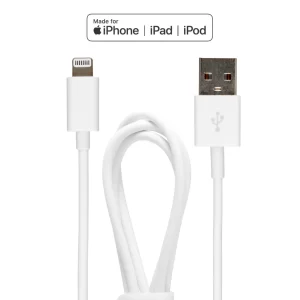
What Is a Lightning Cable
 What Is a Lightning Cable Used For?
What Is a Lightning Cable Used For?
The Lightning cable serves a variety of functions that enhance the functionality of Apple devices. Some common uses include:
1. Charging Apple Devices
The most common use for a Lightning cable is to charge Apple devices. It provides a fast and efficient charging connection for devices like iPhones, iPads, and AirPods. The cable can be plugged into a wall adapter, USB port on a computer, or a power bank to supply the necessary power to the device.
2. Data Transfer
Lightning cables are also used for data transfer. They allow users to transfer files, photos, music, and other content between their Apple device and a computer. Additionally, the cable can be used to sync content across Apple devices or backup data to iTunes or iCloud.
3. Audio and Video Output
The Lightning cable can be used to connect Apple devices to external displays, monitors, or projectors for audio and video output. This is particularly useful when presenting or streaming media from an Apple device to a larger screen.
4. Connecting Peripherals
In addition to charging and data transfer, Lightning cables can be used to connect Apple devices to various peripheral devices, such as headphones, speakers, cameras, or game controllers.
 Key Features of the Lightning Cable
Key Features of the Lightning Cable
1. Reversible Connector
One of the most noticeable features of the Lightning cable is its reversible connector. Unlike older 30-pin connectors or other USB cables, the Lightning connector can be plugged in either way, eliminating the frustration of orientation mismatches. This makes it more user-friendly and convenient to use.
2. Compact and Durable
The Lightning connector is smaller and more durable than older charging ports, making it ideal for portable devices. It is designed to withstand frequent use, reducing the likelihood of damage over time.
3. Fast Data Transfer and Charging
Lightning cables support high-speed data transfer and fast charging capabilities. iPhone 8 and later models, for example, support fast charging when using a compatible USB-C to Lightning cable, allowing you to charge up to 50% in 30 minutes.
4. Audio and Video Output
With the appropriate adapters, Lightning cables can also be used to transmit audio and video signals to external displays or TVs, making them ideal for presentations, media streaming, or mirroring content.
 How Does a Lightning Cable Compare to Other Cables?
How Does a Lightning Cable Compare to Other Cables?
| Feature | Lightning Cable | USB-C Cable | Micro-USB Cable |
|---|---|---|---|
| Connector Size | Small and compact | Larger than Lightning | Similar size to USB-A |
| Charging Speed | Supports fast charging | Fast charging (up to 100W) | Slower than USB-C |
| Data Transfer Speed | Up to 480 Mbps (USB 2.0) | Up to 10 Gbps | Up to 480 Mbps (USB 2.0) |
| Reversible Connector | Yes | Yes | No |
| Device Compatibility | Apple devices only | Compatible with many devices | Mostly Android devices |
 Advantages of Lightning Cables
Advantages of Lightning Cables
1. Apple Ecosystem Integration
Lightning cables are fully integrated with the Apple ecosystem, ensuring compatibility with iPhones, iPads, MacBooks, Apple Watches, and other Apple products. The USB-C standard is also gaining traction across newer devices, but the Lightning connector remains exclusive to Apple.
2. Fast Charging and Data Syncing
With USB 2.0 speeds, the Lightning cable can transfer data between your Apple device and a computer at speeds of up to 480 Mbps. This is perfect for quickly syncing photos, music, and files between devices. Additionally, the Lightning cable supports fast charging for most recent Apple products, ensuring you spend less time charging.
3. Compact and User-Friendly Design
The reversible design of the Lightning connector makes it easier to plug in compared to traditional USB-A or micro-USB cables. The small size also means the cable is less prone to wear and tear and is easier to carry around.
4. Versatility and Convenience
With the right adapters, a Lightning cable can be used for multiple purposes—from charging your device to connecting to external displays and audio systems. It’s a versatile tool that can serve a wide range of tasks, ensuring you can always stay connected and powered up.
 How to Choose the Right Lightning Cable
How to Choose the Right Lightning Cable
When choosing a Lightning cable, here are a few factors to consider:
1. Device Compatibility
Ensure that the Lightning cable you choose is compatible with your device. Apple’s authentic Lightning cables are designed for use with iPhones, iPads, and iPods. Be sure to select cables certified by Apple’s MFi (Made for iPhone/iPad) program for optimal compatibility and performance.
2. Charging Speed and Length
If you need to charge your device quickly, look for a USB-C to Lightning cable that supports fast charging. For longer cables, consider the charging speed—longer cables may have slightly slower charging times due to voltage drop.
3. Durability
For heavy users, choose cables that are durable and tangle-resistant. Brands like Anker and Belkin offer reinforced Lightning cables that can withstand wear and tear from frequent use.
 Lightning Cables from TOT Wire & Cable
Lightning Cables from TOT Wire & Cable
At TOT Wire & Cable, we offer high-quality Lightning cables that are certified for optimal performance and reliability. Our cables provide fast charging, data transfer, and audio output for a wide range of Apple devices.
Key Features of Our Lightning Cables:
- MFi Certified for guaranteed compatibility with Apple devices
- Durable design with reinforced ends for extra protection
- Available in multiple lengths for your convenience
- Fast charging and data transfer support

 FAQ: Common Questions About Lightning Cables
FAQ: Common Questions About Lightning Cables
Q: Can I use a Lightning cable with my MacBook?
A: Yes, if you have a USB-C to Lightning cable, you can connect your MacBook to iPhones and iPads for charging and data transfer.
Q: What is the difference between a Lightning cable and a USB-C cable?
A: The Lightning cable is used exclusively with Apple devices, whereas USB-C is a universal standard used across many devices, including newer MacBooks, laptops, smartphones, and tablets.
Q: Why does my Lightning cable stop working?
A: Lightning cables can wear out over time, especially if exposed to extreme bending or pressure. It’s best to avoid excessive bending and use MFi-certified cables for longevity.
 Conclusion
Conclusion
A Lightning cable is an essential accessory for Apple users, providing fast charging, data transfer, and audio/video output for a wide range of devices. Whether you're syncing your iPhone to your computer, charging your iPad, or connecting to an external display, a Lightning cable is a reliable and efficient solution.
TOT Wire & Cable provides high-quality Lightning cables that ensure optimal performance, reliability, and durability. With our certified cables, you can count on seamless connectivity for all your Apple devices.

 What Is a Lightning Cable?
What Is a Lightning Cable? What Is a Lightning Cable Used For?
What Is a Lightning Cable Used For? Key Features of the Lightning Cable
Key Features of the Lightning Cable How Does a Lightning Cable Compare to Other Cables?
How Does a Lightning Cable Compare to Other Cables? Advantages of Lightning Cables
Advantages of Lightning Cables How to Choose the Right Lightning Cable
How to Choose the Right Lightning Cable Lightning Cables from TOT Wire & Cable
Lightning Cables from TOT Wire & Cable FAQ: Common Questions About Lightning Cables
FAQ: Common Questions About Lightning Cables Conclusion
Conclusion